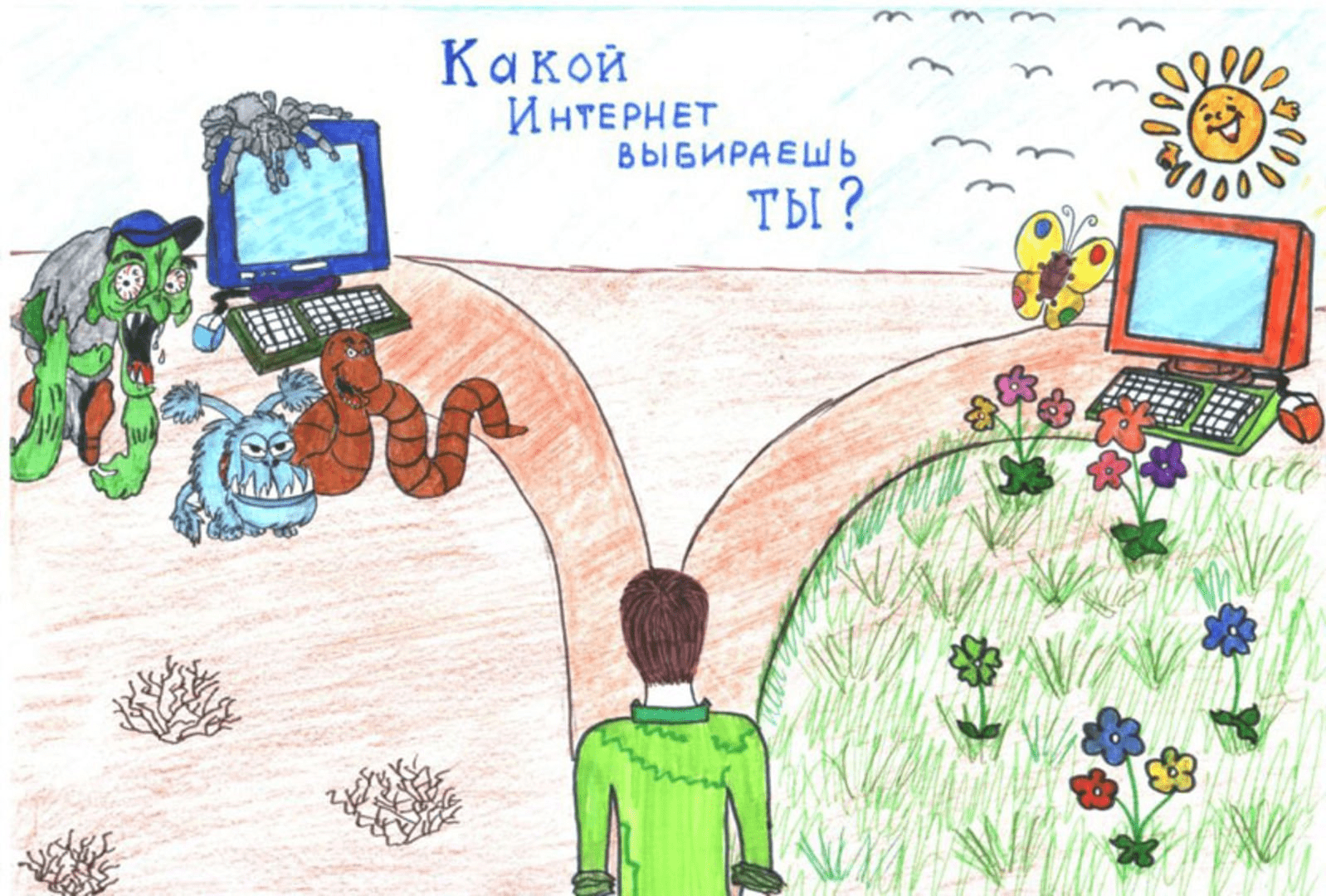how to keep little ones safe
My school years occurred at a time when all sorts of punishments for children were, if not the norm, then “trifles, an everyday matter.” Usually they got in for grades and hooliganism, less often for smoking. And so, one day we organized a boycott of the drawing teacher in class and signed a petition created against him (for a second, the reason was significant: he kicked the cat and threw it out the door). A couple of days later the teacher was replaced, and one girl with very strict parents came to school only three days later. It turned out that all these days she was locked at home and stood in the corner a lot. The reason was extravagant: for leaving my full name and signature on the petition. Almost 25 years have passed since then, and today the reason does not seem extravagant, and the foresight of the girl’s father, who carried out the punishment, is impressive.
Personal Data Protection Day is a time not only to discuss adult topics, but also to talk about children. After all, these are our personal security gaps (and not just cyber ones).

If we put all emotions aside, then a child today is a huge factor of vulnerability with an interesting legal nature: it seems that his signature, word, etc. are not valid or have limited rights (depending on age), but he has the skills and abilities to access to the Internet (ATMs, applications, smart home) and at the same time, most often he is well informed about the state of the family, mom and dad, places where money and documents are stored. In especially democratic families, 7-9 year old children are often aware of their parents’ work, family obligations (loans, mortgages), bank deposits, etc. Of course, in such conditions, a child becomes an easy and convenient prey for cyber fraudsters.
Of course, you can set parental controls everywhere, limit access to the network, ban everything you can to the very extreme, but this may turn out to be ineffective:
the child loses trust in his parents, fear of punishment gives rise to lies – in case of real trouble, he will hide the fact or details from you, and what’s even worse – he will share it with not the most suitable adults;
modern children are able to bypass prohibitions and restrictions;
the child can gain access in another place when you forget about the problem – for example, on a classmate’s smartphone or tablet;
the child will turn out to be a digital ignorant – and this is much more dangerous than it seems.
A true, fortunately innocent story. A 12-year-old boy had limited access to the Internet, walked around with a push-button telephone, and rarely sat down at his mother’s laptop at great resolution. He had absolutely no idea how websites worked – none except YouTube, which he was allowed to watch (without restrictions, by the way). And under some video, he clicked on a link to a toy, went to one bright marketplace site, and more toys appeared there, he clicked it all into the cart (now he figured it out), and then instead of ordering the chosen one (which already like that!), he ordered the entire basket (he simply could not have known about any daws). And we certainly know what kind of baskets many users have. As a result, I had to pay a total of more than 2,000 rubles to give up all this stuff. Little things, of course, and a very small price to pay for a serious lesson for everyone. But the situation might not have been so simple.
So what to do?
The first and most important thing is to talk
Tell your child about how security threats arise, explain how the network works – it will not only be useful, but also interesting. Computers and gadgets will no longer be just boxes, but will become clearer, more tangible and “human”, which means the danger will no longer be ephemeral. Tell it like it is: what types of cyber fraud are there, why criminals get to the data, and what those who fall into the trap experience.
Of course, this should not be a boring lecture with a retelling of Tanenbaum. The best way is to write scenarios and interactively walk through them with your child, first together with an explanation of the theory, and then for reinforcement. Such a dialogue can be realized at any age; only the complexity and volume of knowledge and skills will differ. Moreover, in the scripts everything should be clear: the villain is just a villain, and not a computer genius; a computer is a medium, a tool, but neither a friend nor an enemy; the child is a winner and protector who saved the whole family. This way, children will definitely accept the message and feel responsible.
Ask your children to avoid contact with strangers, refuse any transactions with money, and not tell anyone anything about themselves. Don’t forget to say that friends can also become victims of scammers, and if Vasya asks for money, it’s most likely not Vasya and you need to urgently inform adults about this – even if the “friend” asks not to give it out and “to transfer a couple of hundred.”
Talk to your children about financial literacy, and at the same time explain that the bank card in their hands, on the one hand, is a piece of plastic (and it’s not scary to lose it), but on the other hand, it’s the key to treasure (and if lost, you need to urgently tell them) with magical numbers that no one should know. You can explain to teenagers straight away: the card is the key to money and important information, so you shouldn’t give your data to anyone or use it for payments on the Internet or telegrams.
Another important point: set aside time in which you can sit together at the PC, choose clothes or toys, pay for a subscription, buy mods in the game or VKontakte voices – let the children know that you share their interest and are ready to pay for everything within reason.
Play
Playing is the most important activity for a child. Therefore, if you find a way to gamify safety training on the Internet and in real life, the skill will be learned quite firmly and will pop up at exactly the right moment. It all depends on your imagination, but you can at least play as a scout, a detective, or a turn-based strategy using scrap materials.
By the way, in the game and in explanations it is important to use the correct terminology, and not replace or simplify words. The reason is simple: in the event of an attack attempt, the child will see exactly the terms on the screen, and not metaphors or images, and he will recognize them because the adults talked about it. So a server is not a house with letters or a clearing with flowers, an account is not a face on the Internet 🙂 Even for a seven-year-old.
Important point! Nowadays, children start working with code early: some are already tinkering with pseudocode at 6-7 years old, others are able to write a simple page or a walker at 14 (or even earlier). Accordingly, children can exchange code, discuss, brag, and scammers know about it. So what may come from Vasya is not a request for 200 rubles, but a fragment of code, a link to the “repository” and whatever. It is very important to teach your child to recognize links and phishing messages and letters.
If you don’t have time to play or your fantasy has ended in school lessons, you can turn to the experience of others: use ready-made games, watch and discuss cartoons. I have collected some cool and sticky things for you, even for adults.
If you wish, you can find a lot of materials for inspiration (just before showing your child the video, watch it yourself, especially if you are not sure about the publisher).
Set the rules
All of us in our families have rules for behavior at school, in our room, in the kitchen, in the bathroom, during flu or cold… These are simple and important points that have become automatisms. But for some reason it’s so rare to see home rules for Internet safety and personal data protection! And now it’s really serious. Install them – before it’s too late and the mistakes don’t acquire a price (and it’s good if in monetary terms).
I will list points that are worth mentioning – but their combination depends on the habits and traditions of each family and, of course, on the age of the child.
Form the concept of personal data: full name, nicknames, telephone, mail, address, numbers of any documents. It’s a good idea to remember that it’s better to keep your airline/railway ticket numbers, passwords (including those for school services), school number, etc. secret.
Convince your child not to sign anything, even if it is a joke document; and especially not to forge the signatures of parents and teachers (it’s amazing how this school bad habit passes through time).
Keeping it secret means not sharing, not telling, not dictating, not posting photos with them. Even to classmates and teachers, this is all “adult” data, even if adults share it.
Teach your child not to “hook” free Wi-Fi, especially if it does not require any password.
Younger children should download games and applications only with the consent of adults and under supervision, and teenagers should only use official mobile and game stores.
If a child needs software for a hobby or creativity, buy it, don’t look for cracks, and especially don’t show how you do it.
Explain that videos can only be watched in special applications and on special websites. Teach you how to search for content within 2-3 platforms, explain how videos and advertisements are “thrown up”.
Tell us that even the most sincere message from a friend, teacher or grandmother asking you to open a “funny cartoon” or a postcard can be sent by a stranger. If you want to see it, it’s better to call your grandmother back or show the message to your parents.
Tell us about cyberbullying. Explain that this is not shameful and the victim is not to blame – someone just needs to conduct an evil experiment and release their bad mood from boredom. No matter what happens, you are on the child’s side.
If you think your teen already knows all about this, you think so. Carry out the whole range of prevention, no matter how bored the little face opposite may be.
Explain how to use the Internet for learning.
Encourage your child to report any suspicious situation at any time, 24/7. This is as important as, for example, the issue of health.
The main thing: do not demonize the Internet and technology! Modern capabilities are great, but you have to be careful. Almost like being in a forest 🙂
But among all the rules there is one golden one: be an example. The pattern of working with gadgets and relationships with security is learned by the child in the same way as communication style, family relationships and much more. Therefore, when it comes to protecting personal data and cybersecurity in the family, everything again depends on a smart adult. And we, alas, in these matters often idiots not particularly thought out.
Be thoughtful, but without paranoia 🙂
✍️ Tell us about how you teach your child cybersecurity and how you teach them to protect personal data. The author of the best story will receive a pleasant surprise, and we will compile an educational publication from the stories themselves.





